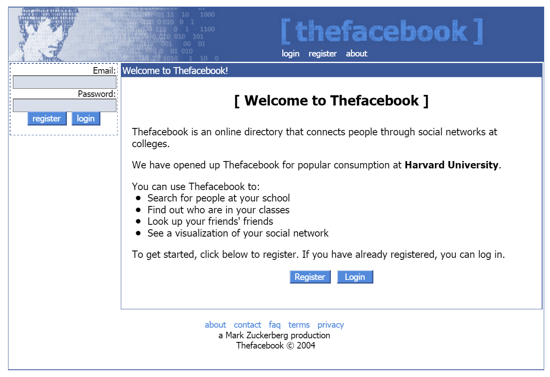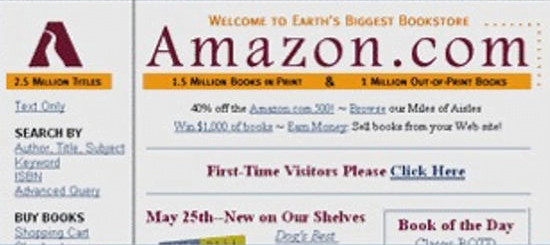Reading Time : 1 Mins
13 examples of successful MVPs
Loves getting creative with mundane topics in addition to geeking out over books and movies.
Every once in a while, you’re struck with an idea you think could be the next big thing. But often, it’s shrugged off as too far-fetched to achieve. But what if we were to tell you that some or rather quite a few of the industry giants today once started off with a small idea which was relevant to the time and market.
These companies that we are going to talk about in this article adopted the Minimum Viable Approach or MVP when they first began their journey. MVP is releasing your product or service in the market with only the core functionalities, to test the waters and see how your product is faring among the selected target audience. It also helps identify what is lacking in your product, thus giving you the opportunity to improvise before you release the final version to the larger set of customers.
Wondering about the MVP strategy for your business? Read a detailed guide about all things MVP here.
MVP Success Stories:
We will look at some of the popular apps that were once nothing but a rough concept or a baby version of what we see today.
1. Facebook
Only few are unaware of the Mark Zuckerberg adventure. In 2004, Facebook known as ‘TheFacebook’ then, was built as a platform to connect University students at Harvard through email addresses. It slowly expanded to more universities and in the same year launched the ‘Wall’ where one could post updates and receive messages. In 2005, it added the photo feature. By 2006, Facebook went mobile and anyone could join it. In 2007 it introduced video capability. It then went like – the launch of ‘Like’ button, groups, video calling, marketplace, business manager and so on. So, we see, Facebook was not a one-night wonder. It’s a prime example of responding to people’s social connectivity needs and building a successful digital platform to address those demands.

2. Twitter
“just setting up my twttr.” is a tweet that has aged well. Twitter, known as Twttr back then was a communication platform set up between a couple of friends to share updates. By 2006, Twitter was open to the public as a micro-blogging site. The infamous hashtag made its entry in the year 2007. Twitter started gaining huge popularity and that’s when they introduced advertising platform in 2010 to promote tweets. They launched Tweet Deck in 2011 and video-sharing app Vine in 2013. In 2014, the promoted video feature changed the game for businesses and entertainment industry. By 2015, the platform also had Group direct messages. In short, Twitter was and is trending!
3. Airbnb
Airbnb has established itself not just as a homestay option but an experience. The first Airbnb stay in 2007 was the founders’ own apartment with 3 air mattresses, work desk and breakfast. After receiving funding, in 2009, Airbnb expanded to include entire homes, apartments, private rooms, castles, boats, manors, tree houses, igloos, private islands and other properties under their umbrella. In 2015 they launched an iPad app followed by one for Apple Watch. Users can now book experiences that will offer the best of the local site they will be staying at. They also introduced a new search tool specially for business travelers.
4. Dropbox
Humans are forgetful, but University student Drew Houston made a successful business out of this. Dropbox initially allowed backup of desktop files on the web and made file sharing easy. As the next step they offered extra free space if they could get a friend to sign up. It became an instant hit and millions of subscribers signed up. It has since then made photos, videos and other file sharing easy as compared to email servers that are still struggling on this front. Even Apple’s iCloud paled in front of Dropbox’s growth. Dropbox has shown that the cloud is an immensely powerful infrastructure.
5. Zappos
This was a business idea that came into play when founder Nick Swinmurn went shoe shopping but could not find the right fit even after visiting many shops. In 2000, Zappos was an online platform that sold shoes. By 2007 their annual revenue doubled, and it diversified into handbags, eyewear, clothing and watches which contributes to 20% of business even today. In 2009, Amazon acquired Zappos and the company continued coming up with relevant products like vegan shoes and a couture line to keep up with market needs.
6. Amazon
When Jeff Bezos launched Amazon website in 1995, it sold only books! But even then, he had a vision that the website would dominate the e-commerce industry. From the very beginning convenience was Amazon’s USP. It slowly expanded into selling videos and music in 1998. By 2000, the website was selling consumer electronics, software, household items, toys, video games and so on. It then went on to launch Amazon Web Services in 2002, owing to Bezos’ ambition to make Amazon a tech company. With the launch of Kindle in 2007, Amazon had revived the e-book market. Read more on the staggering growth of Amazon here.

7. Instagram
Third time was the charm for Kevin Systrom, co-founder of Instagram after his first two apps Burbn and Scotch did not take off. Instagram was available only for iPhone users till 2012. By 2010 itself there were a million Instagram users. It then launched for Android in 2012 and introduced the hashtag feature. In 2015, Instagram ads made its way, followed by IG business pages and the ‘Stories’ feature. By 2017, users could post multiple photos or videos following the launch of carousel posts. In 2018, IGTV was created for longer video versions. In 2020, the platform’s popularity exploded even further with Instagram Reels. It also allowed curated shopping experience for customers by launching Instagram ‘shops’ in the same year.
8. Uber
The idea for Uber came about in an interesting way. Travis Kalanick and Garrett Camp, who will go on to be co-founders of Uber, could not find cabs one night after a conference. It was then that they felt a solution to this problem had a potential market. After much thought, the first prototype of UberCab as it was known initially was tested in New York with 3 cabs. 2 years later it went on to launch internationally. Uber’s growth was one that exploded rapidly. It then introduced Uber Eats for food delivery service. Uber started offering UberPool allowing multiple customers on a single ride. In 2018, Uber acquired Lime making electric scooters available for rent. Uber’s strategic investments have made it one of the most valuable startups.
9. Swiggy
It must be said that Swiggy is an app that entered a market that had great demand and no players. It’s also a service that has constantly adapted to the changing needs of the market, thus becoming a credible threat to rivals like Zomato, Foodpanda and UberEats. Swiggy started by partnering with 25 restaurants and only 6 delivery executives in a targeted area. It then had a massive growth, with its presence now reaching over 500 cities in India. Swiggy had a large group of their own delivery boys and invested in a sales team that would keep popular restaurants on board. They also built a technology to make its logistics more efficient. Swiggy has now diversified into segments like instant delivery of everyday items, pick and drop of any item and so on. Read how the use of right technology boosted Swiggy’s growth here.
10. Groupon
Before being Groupon, the company was called The Point, which was supposed to be an online fundraiser. It did not take off. But founder Andrew Mason observed that group deals had a decent traction. This became the seed for Groupon. In 2008, Groupon’s first deal was: buy two pizzas for the price of one. In 2011, they acquired Obtiva to amplify its tech capabilities. In 2013 Groupon acquired a real-time location sharing app and last-minute travel app for same day reservations. In 2013 the website had a complete revamp and new features were added for marketplace. In 2015 Groupon also acquired food-delivery service Order Up. Today, Groupon has one of the largest subscriber base with over 200 million users internationally.
11. Instacart
Even with the advent of online shopping, Apoorva Mehta, founder of Instacart felt that grocery shopping was an area still stuck in the age-old pattern. He saw the need for online grocery shopping and went on to create Instacart in 2012 where shoppers can assist customers in shopping for their needs. Instacart is constantly evolving to improve shopping experience. Aisle navigation enables users to locate their product easily. It also added a replacement option so that customers can replace it with an item that best matches the original request. The app has also enabled in-app chatting so that shoppers can communicate with shoppers in real-time. With the barcode scanning shoppers can quickly verify if they’ve picked the right item. The success of Instacart has been in finding innovative solutions to customers’ problems.
12. Spotify
Spotify started in 2008 as an answer to the ever-growing music piracy problem. Later on, the founders launched a free service. With an upgrade of 10 pounds, subscribers could now listen to ad free music. 2010 was an ambitious year for Spotify as it released desktop music manager at par with iTunes. The same year they also integrated with the music discovery app Shazam. In 2011, Spotify announced a platform where developers could create experiences and buy concert tickets, write reviews and so on. By 2015 Spotify was expanding into podcasts, video streaming and news radio. More importantly Spotify had also launched mood and time-based playlist, a feature loved by users worldwide. Spotify has had competitors over the years, but still manages to give its users a very personalized music experience.
13. Buffer
Buffer is a site that lets you schedule posts across platforms like Facebook, Twitter and Instagram. It took 7 weeks to create the first version of Buffer in 2010. It was observed that users didn’t mind paying for its services. Slowly, Buffer introduced new features like Google + scheduling support, custom scheduling and more. By 2013, the platform had a million users. This way they created a product that the market wanted, slowly and steadily.
Conclusion:
Interesting, right? How all the giants that we see today started small with the idea they had! They didn’t wait for the full-fledged perfect product, but eventually grew into one as they learned what their customers needed, in the process.
Want to know more about how you can get started with MVP for your business? Talk to experts at Zuci Systems today.
Related Posts





















